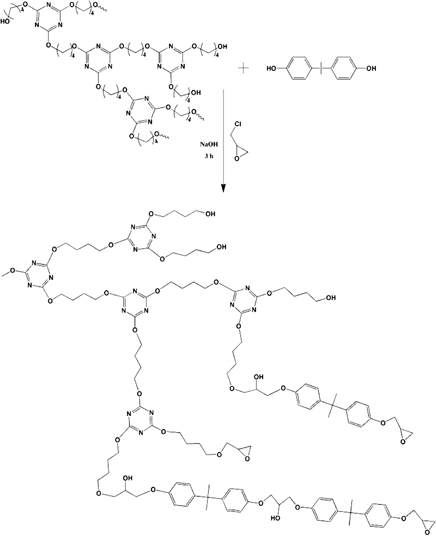Article contents
Synthesis and characterization of thermostable hyperbranched epoxy resin for surface coating applications
Published online by Cambridge University Press: 28 March 2012
Abstract

A hyperbranched epoxy resin has been synthesized by using epichlorohydrin, bisphenol-A, and hyperbranched polyether polyol by a low-temperature polycondensation technique in the presence of a base. The reaction parameters of this polycondensation reaction were optimized, and 5 N aqueous sodium hydroxide solution, (54 ± 1) °C reaction temperature and 3 h reaction time were found to be the best. The degree of branching of the resin was found to be 0.57 as determined from 13C nuclear magnetic resonance spectroscopy (Fig. 3). This hyperbranched epoxy resin was cured with poly(amido amine) hardener at 120 °C for a specified period of time. The resin exhibits very good crosscut adhesive strength (100%). The cured films showed moderate impact strength (60 cm), good scratch resistance (5.5 kg), good gloss (82 at 60°), thermostability up to 270 °C, and good chemical resistance in various chemical media. All these results indicate its suitability to be used as an advanced surface coating material.
- Type
- Articles
- Information
- Copyright
- Copyright © Materials Research Society 2012
References
REFERENCES
- 11
- Cited by


